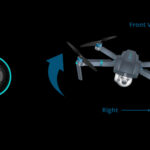If you’ve recently been diagnosed with high blood pressure, or hypertension, the thought of air travel might bring up some concerns. You’re likely asking, “Is it safe for me to fly?” This comprehensive guide, brought to you by flyermedia.net, is designed to give you all the necessary information and advice you need before taking to the skies.
 Plane
Plane
Understanding High Blood Pressure (Hypertension)
High blood pressure, or hypertension, is a common medical condition where the force of blood against your artery walls is consistently too high. This elevated pressure can, over time, significantly increase your risk of serious health problems, including heart disease, stroke, and kidney disease.
It’s a widespread issue; in the UK alone, over a third of adults live with hypertension, and many are unaware they have it until diagnosed through a medical test. For those with high blood pressure, air travel can present unique considerations. Understanding these potential risks and taking appropriate precautions is crucial for a safe and comfortable journey.
Flying with High Blood Pressure: Safety and Key Considerations
Generally, flying is considered safe for individuals with high blood pressure, provided your condition is well-managed and under control. However, it’s absolutely essential to consult with your doctor before planning any air travel. They can assess your specific health status, provide personalized advice, and ensure you’re taking all necessary steps to minimize potential risks during your flight.
One of the primary concerns for passengers with hypertension is the increased risk of developing deep vein thrombosis (DVT). DVT occurs when a blood clot forms in a deep vein, usually in the legs. This condition can become extremely serious if the clot travels to the lungs, leading to a pulmonary embolism.
The risk of DVT is elevated during air travel because prolonged periods of sitting with limited mobility, especially in the confined spaces of an airplane cabin, can slow blood flow. Individuals with high blood pressure are already at a greater baseline risk for blood clot formation, making preventative measures during long-distance flights particularly important. Adhering to prescribed medications and implementing recommended strategies to promote circulation are vital for mitigating this risk.
Another factor to consider is hypoxaemia, a condition characterized by a lower concentration of oxygen in the blood. Even in pressurized airplane cabins, the altitude can result in slightly reduced oxygen levels. While this may not pose a significant risk for healthy individuals, those with pre-existing heart conditions, including hypertension, may be more susceptible to the effects of reduced oxygen.
Essential Advice for Safe Flying with High Blood Pressure
Having high blood pressure doesn’t automatically ground your travel plans. For most people, flying is achievable and safe by following sensible health and safety guidelines. Here’s what you should do:
-
Minimize Stress and Anxiety: Airports and air travel can be inherently stressful environments. Elevated stress levels can temporarily raise blood pressure. Practice relaxation techniques such as deep breathing exercises or meditation both at the airport and during your flight to help maintain calm and manage anxiety.
-
Medication Management is Key: Ensure you take all your prescribed blood pressure medications as scheduled, even when traveling. Always pack your medication in your hand luggage. This ensures you have immediate access to it and avoids potential issues if your checked baggage is delayed or lost. If you need to take medication during the flight, having it readily available is crucial.
-
Combat DVT Risk: Take proactive steps to prevent DVT, especially on longer flights. Wear compression socks to help improve blood circulation in your legs. Make it a point to get up and walk around the cabin periodically whenever it’s safe to do so. Additionally, perform simple DVT-prevention exercises while seated, such as ankle rotations and calf raises, to encourage blood flow.
-
Avoid Alcohol: It’s best to abstain from alcohol consumption both before and during your flight. Alcohol can dehydrate you and may interfere with blood pressure management, potentially increasing risks during air travel.
-
Invest in Comprehensive Travel Insurance: Purchasing travel insurance that specifically covers pre-existing medical conditions, including high blood pressure, is a wise precaution. This provides an added layer of financial protection and peace of mind in case of any unexpected medical emergencies or complications that might arise during your trip.
 Pills
Pills
By taking these precautions and consulting with your healthcare provider, you can confidently enjoy air travel while effectively managing your high blood pressure. Remember, preparation and awareness are your best allies for a safe and healthy journey.
